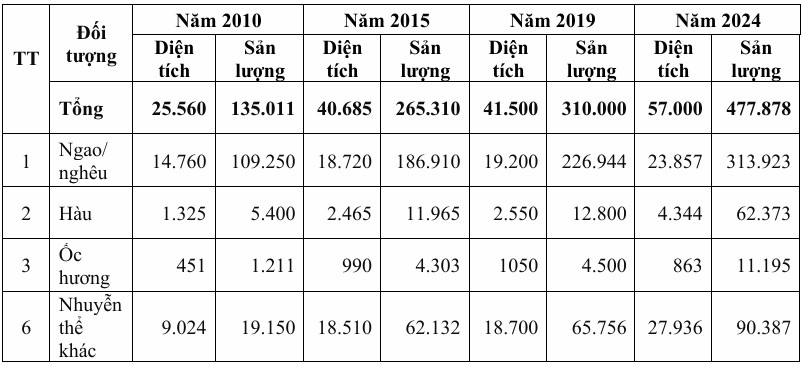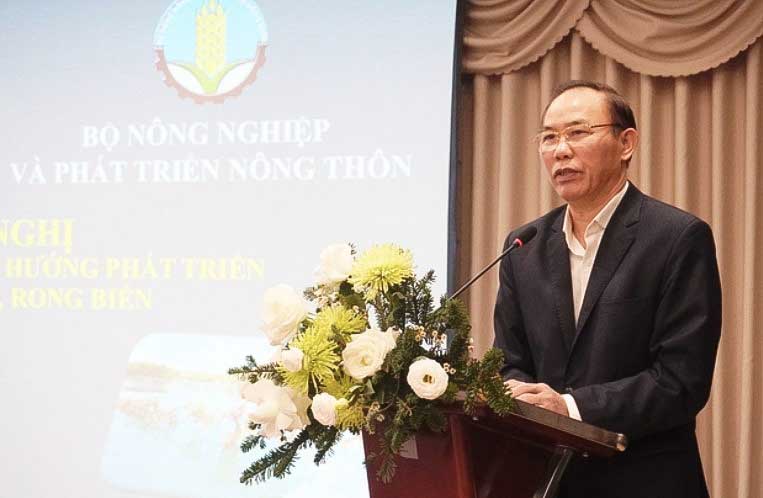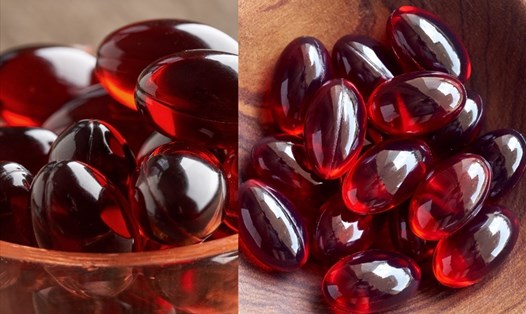Diversity potential of mollusks and seaweeds
With ideal natural conditions, Vietnam has a suitable environment for the development of mollusks and seaweed. In 2024, the mollusk farming area will reach 57,000 hectares, with an output of 477,878 tons, while the seaweed growing area will reach 16,500 hectares, with an output of 155,000 tons.
Major mollusc species include clams, cockles, blood cockles, oysters, sweet snails and scallops. Clams currently account for the largest proportion of mollusc production. Advanced clam farming models following MSC standards have brought added value and affirmed the Vietnamese clam brand in the international market.

In 2024, the export turnover of mollusks reached 195.3 million USD, an increase of 67% compared to the previous year. Mollusk products such as clams, oysters and mussels have penetrated many demanding markets such as the EU, Japan and the US. For seaweed, the global market size is growing strongly, expected to reach 5.56 billion USD in the period 2023-2028 with a compound annual growth rate (CAGR) of 7.22%.

Integrated mollusk and seaweed farming models have helped improve the ecological environment and increase economic efficiency. For example, in Nam Dinh, clam farming has become the main farming species, bringing an estimated output of 49,500 tons in 2024.
Deputy Minister of Agriculture and Rural Development (MARD) Phung Duc Tien emphasized: "In addition to contributing to economic growth, mollusk farming and seaweed cultivation also play an important role in reducing pressure on exploitation of aquatic resources, reviving resources and reducing conflicts in the process of protecting resources". The Deputy Minister also affirmed: "Promoting the development of mollusks and seaweed is in line with the current green trend".

Mr. Tran Anh Dung - Permanent Vice Chairman of Nam Dinh Provincial People's Committee - said that clam farming in the locality has now become the main farming object, but still faces many difficulties in infrastructure and seed quality.
"We look forward to receiving attention and support from central ministries and branches to solve the problem of infrastructure and investment in quality breeds, contributing to the development of sustainable farming," Mr. Dung emphasized.
Many challenges to be solved
Despite significant achievements, Vietnamese mollusks and seaweeds still face many difficulties. Seed quality is an alarming issue, as most mollusk seeds rely on nature and lack strict control.
Environmental pollution and climate change are seriously affecting water quality and farming conditions.
Deputy Minister of Agriculture and Rural Development Phung Duc Tien emphasized that the mollusc and seaweed industry needs to continue to promote scientific and technological research, especially in improving the quality of breeds to reduce dependence on nature. Investing in a sustainable farming model, combining molluscs and seaweed, can help achieve optimal economic and environmental efficiency.
To increase the value of products, businesses need to promote deep processing and produce high-end products such as pharmaceuticals, cosmetics, and bioplastics from seaweed. Along with that, international cooperation in technology transfer and exploitation of new markets is a necessary condition.
Mr. Nguyen Ho Nguyen - General Director of Lenger Seafood Vietnam Co., Ltd. - said: "Enterprises need to quickly innovate technology, invest in quality and biosafety to meet international market demand."
Mr. Tran Anh Dung - Permanent Vice Chairman of Nam Dinh Provincial People's Committee - said that clam farming in the locality has now become the main farming object, but still faces many difficulties in infrastructure and seed quality: "We hope to receive attention and support from central ministries and branches to solve the problem of infrastructure and invest in seed quality, contributing to the development of sustainable farming".











